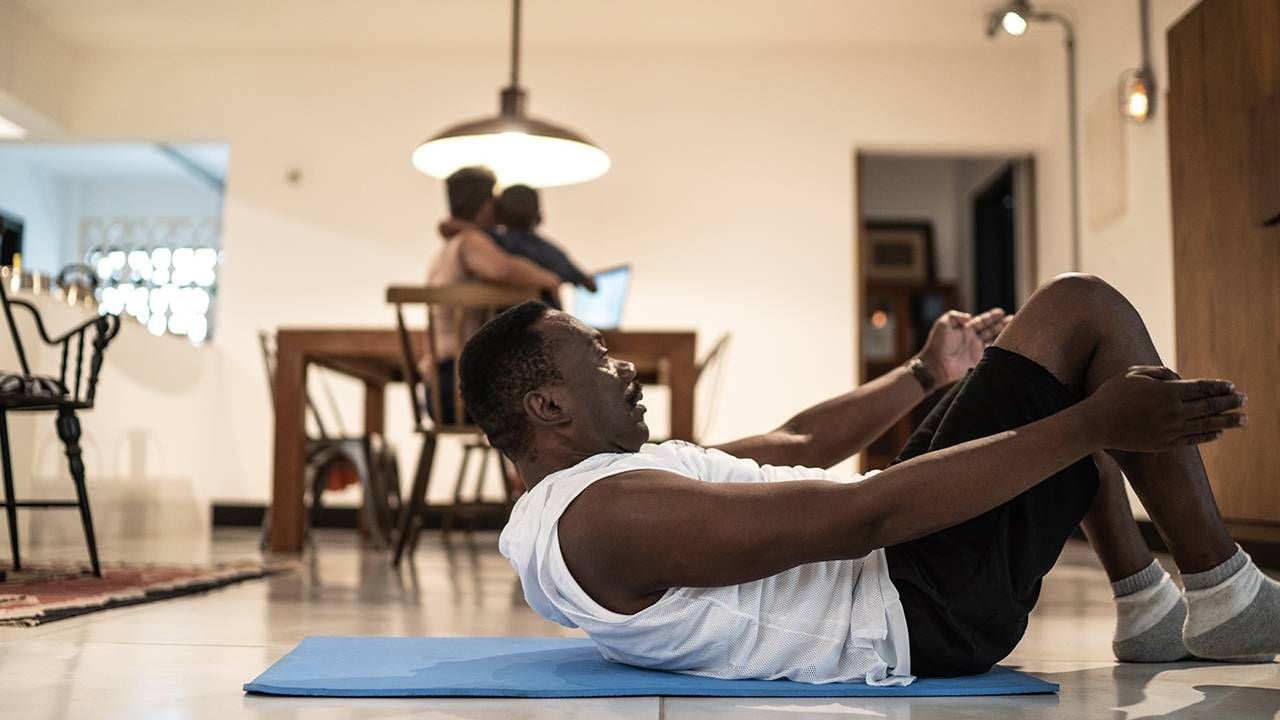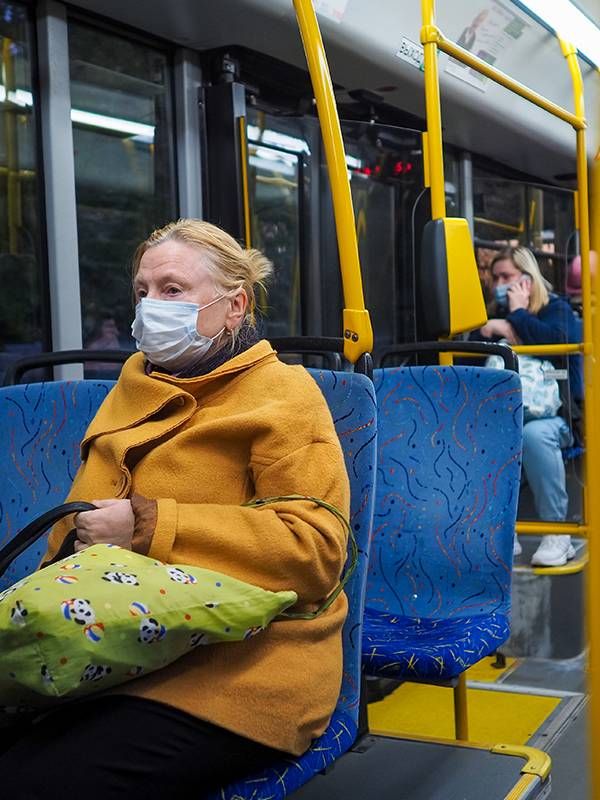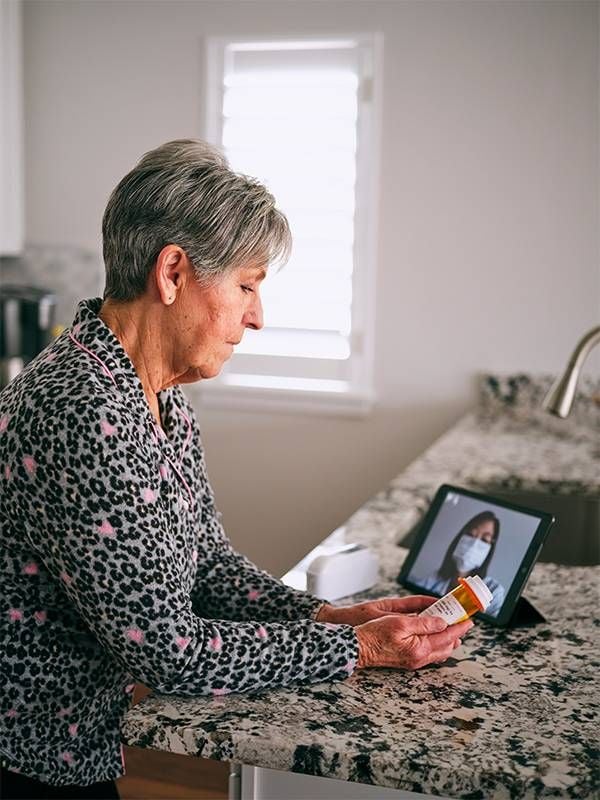9 Things We Learned During COVID-19 That Will Endure
Pandemic changes that might become routine in our future
As the COVID-19 pandemic rages, it's hard to envision an end in sight. But with vaccines moving forward and new treatments emerging, there will be a day when we can get back out into the world and resume our lives.

What will those post-pandemic lives look like? A majority of U.S. adults (86%) polled by Pew Research Center say there is some kind of "lesson or set of lessons" to be taken from the pandemic, like the importance of wearing a mask to protect others, the value of spending time with family and loved ones or the need for universal health care.
Here are nine pandemic changes that might just become part of our future survival guide:
1. Mask Wearing

In Asian countries, face masks are an accepted part of everyday life, which might be one reason death rates from the coronavirus there are relatively low. It's common in those nations to wear masks to control respiratory droplets especially during cold, flu and hay fever seasons. In Japan, face masks are nearly universal in public areas, despite not being mandated.
Though relatively new to our culture, masks have now morphed into fashion statements (just look at Nancy Pelosi's matching masks and outfits). The company Second Wind, whose masks include decorative chains, recently told the New York Times that within just 24 hours of announcing a pre-sale on Instagram last July, the company sold 10,000 products.
When rules that require mask wearing are eventually lifted, it's possible the habit may become permanent, at least when people are indoors in crowded spaces like bars, restaurants and arenas.
In a recent white paper, the professional consulting services firm Deloitte reports "A short-term regulatory intervention, like compulsory face masks, can trigger a settling-in period which influences the 'new normal.'"
2. Our Personal Approach to Wellness
The pandemic has inspired many people to take a more active role in their health.
In its recent trend report, the marketing communications agency Wunderman Thompson notes that companies are recognizing a rising need for technology that allows us to track our health status in our homes — like blood pressure monitors, sleep sensor patches and devices that measure lung function and respiratory rates.
"We have witnessed the reinvention of our homes as a core element of the health care pathway with telehealth, virtual and remote care technologies as the key drivers for change during COVID-19," Deeptha Khanna, chief business leader of personal health at Philips, a global health technology company, said in a statement.

He predicts the changes will be permanent.
3. Telehealth
The urgent need to practice social distancing combined with fear of seeking medical care has sped up the adoption of telehealth by many patients and practitioners. During the first quarter of last year, as the pandemic was starting, telehealth visits increased by 50% compared to the same period the previous year, according to the Centers for Disease Control and Prevention.
"By allowing for generous reimbursement policies at the public and private level, providers quickly had to pivot, and patients quickly acclimated," noted Dr. Howard Forman, a practicing physician and professor of management and public health at Yale University.
As patients grow more comfortable with the technology and regulations evolve to make it easier for providers to get reimbursed, widespread use of telehealth may stick after the pandemic is over.
4. Home Fitness
While home fitness was popular prior to the pandemic, the closings of gyms and fitness clubs have driven sales of home workout programs and exercise equipment, like Peloton, to an all-time high. And when gyms reopen, nine in 10 people say they will continue their home workouts, according to fitness company Beachbody in its The Future of Fitness survey.
Many people have adjusted to the convenience and ease of home workouts. In the future, gym-going might become more of a hybrid activity, like employees who split their time between home and the office.
5. Working From Home
With the working from home trend, companies save money on office space and employees who can do it save on commuting time and costs. Twitter and Google support the practice, while Netflix isn't a fan.
Working from home is nothing new. Prior to the pandemic, surveys showed many employees desired the setup, at least part of the time. Yet going forward, it may become more acceptable and attractive, as more employees settle into its routine and more employers recognize its value.
The Harvard Business Review reports that the number of employees working at home will probably increase, now that "most professionals found ways to be productive outside the office."
Yet not everyone sees it that way. Many workers feel a lack of community and creativity when working from home writes New York Times columnist Kevin Roose.
"Studies have found that people working together in the same room tend to solve problems more quickly than remote collaborators, and that team cohesion suffers in remote work arrangements," said Roose.
6. Retreat From Supermarkets
It was a dream to live the life of the Jetsons, futuristic cartoon characters from the 1960s TV show who lived in 2062, where Jane Jetson shopped for groceries at the touch of a button. But the future is now. In the first months of the pandemic, a survey of shoppers showed that nearly 80% had purchased groceries online, compared to less than 40% prior to the pandemic.

Jim Hertel, senior vice president of analytics at the data and analytics firm Inmar Intelligence, told Supermarket News that the online grocery shopping trend "is likely to continue even as restrictions are lifted." That's because shoppers have grown accustomed to this routine, with convenience being the main driving force, he said.
Irene Levine, of Pleasantville, N.Y., said she's been ordering online groceries since the start of the pandemic and will never look back. "We're pleased with the quality of the food, the ease of ordering and the time savings," she said.
7. Increased Hotel Hygiene
Hotel bookings have taken a blow during COVID-19, but the industry is trying to bounce back by adding measures to ensure their customers' health and safety. The Breakers Hotel in Palm Beach, Fla., for example, has made permanent some initiatives it implemented during the pandemic, like hand-sanitizing stations throughout the resort, touchless guest transactions, advanced cleaning measures and air filtration systems.
Hilton Hotels is partnering with Lysol and the Mayo Clinic to help ensure a feeling of safety and cleanliness. The chain is also considering providing hybrid daily work environments in some of its rooms for local workers and staycation customers, reports MarketWatch.
8. Hybrid Work and Conferences
The hybrid approach offers the ability to gather a small group in person and to involve a larger, virtual audience, said Nancy Davis, chief creative officer of the Global Wellness Summit. The result, she noted, is that those who can access an event virtually feel they are part of something dynamic and those in person have a wider audience with whom they can connect.
While virtual conferences may not offer the same benefits as in-person meetings, according to Global Workplace Analytics, executives will learn that the savings outweigh the costs much of the time.
9. Comfy Fashion
Casual Fridays have become casual everydays, as companies like Banana Republic have launched work-from-home collections featuring relaxed styles with comfort and function in mind.
But how will fashion re-emerge once we're back out into the world?
Beauty historian, author and trends expert Rachel Weingarten predicts a move toward what she calls high concept comfort.
"When there's an industrial revolution of sorts, fashion follows. Although our current fashion world isn't exactly fashionable, in many ways it's become a lot of fun," said Weingarten. "You might see sequins or embellishments on the comfy clothing; it will likely be unlike anything we've worn previously."
Weingarten also sees the re-emergence, for women, of bold pieces and longer earrings, "since right now they're difficult to wear while donning a mask," she said.

